Frisco Style
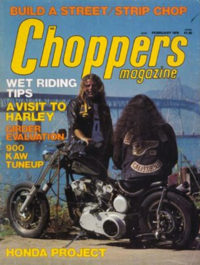 Ever since the custom bike and car scene took off after Word War 2, certain regional styles began to develop based on local riding habits, terrain and / or roads and streets. One of these is the “Frisco” bike.
Ever since the custom bike and car scene took off after Word War 2, certain regional styles began to develop based on local riding habits, terrain and / or roads and streets. One of these is the “Frisco” bike.
The Frisco style originated with Harleys modified by the San Francisco chapter of the Hells Angels. There is little consensus as to who, specifically, first came up with the overall concept; probably several people contributed to the design’s popularity.
San Francisco is renowned for it’s hills, with over 50 of them inside the city limits: some are over 900 feet (275 meters) high. Although it’s also well known for tight streets and narrow alleys, the coastal highway is readily accessible. These combined conditions dictated the three primary elements of Frisco style; mid controls to provide a responsive riding position and the ability to stand on the pegs when you hit bumps; an iconic tank designed to maximize fuel capacity, and “…an engine that’s powerful, dependable, and not crazy big for the hell of it.” Sportsters became the model of choice.
The hallmark of Frisco style is the tank: usually a King Sportster model, the frame channel underneath is cut out and sealed to add fuel capacity. The filler neck is also welded over and a new one cut at the very peak, and the petcock is moved to the lowest point on the rear of the tank. The tank is then mounted to the top of the upper frame rail rather than overhanging it. Front ends were typically lengthened to provide clearance, although the longer rakes were avoided to enable a tight turning radius in city streets.
Although the Frisco style was developed as an adaptation to a specific region, its practical advantages soon caught on to a wider audience; particularly builders like Jeff McCann and Arlen Ness who were active in creating the Norcal style in the late ’60s and ’70s, taking the Frisco tanks and using them on longer raked choppers.
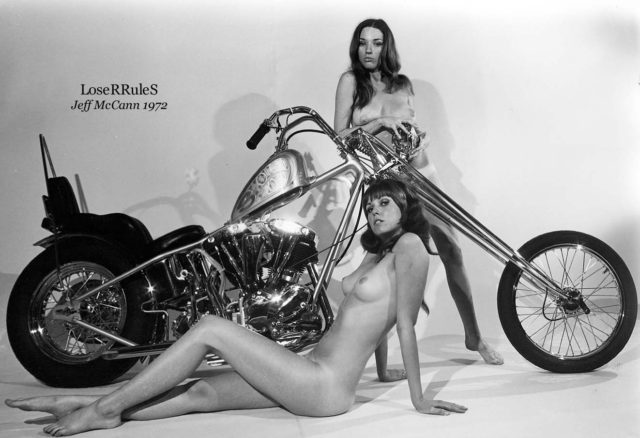
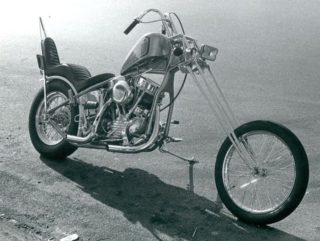 Jeff McCann (1948-2012) began experimenting with custom bikes in his early twenties during his off work hours; his first project was a Triumph 650, followed later that same year with his first Harley Davidson. His talent for art led him into a career in lithography and printing, however his part-time work on his own projects and paint jobs for friends began to take over.
Jeff McCann (1948-2012) began experimenting with custom bikes in his early twenties during his off work hours; his first project was a Triumph 650, followed later that same year with his first Harley Davidson. His talent for art led him into a career in lithography and printing, however his part-time work on his own projects and paint jobs for friends began to take over.
His chopper designs and his finish work became so well recognized, he soon borrowed some money from a co-worker and opened his own bike parts storefront, which sold bike customization and fabrication items to the San Francisco area motorcycle rider. This was about the same time that Arlen Ness opened a similar retail store, and the two became good friends.
Arlen Ness was born in Moorhead, Minnesota in 1939, and had moved to San Leandro, California when he was in the sixth grade. His first customs were made in the garage of his home in San Leandro, California, but by the early 1970s he had moved to a storefront on East 14th Street. Ness was recognized for his unique painting style and for developing a line of custom motorcycle parts. His popularity grew as he built new custom bikes and then had those displayed on the bike show circuit and featured in motorcycle magazines. Ness was soon recognized as a master builder, and McCann used his design, photography, and printing skills to a partnership that benefited both sides and lasted for years.

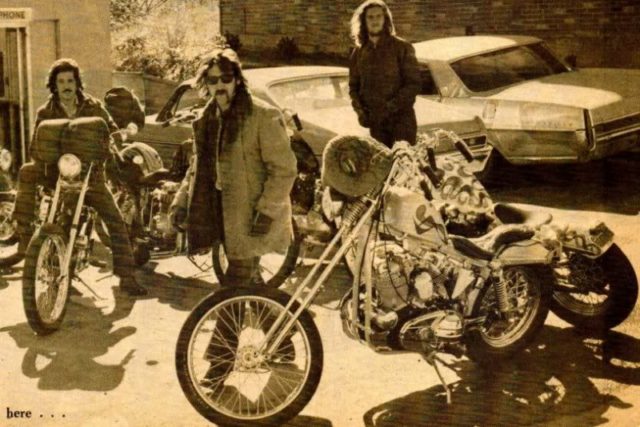
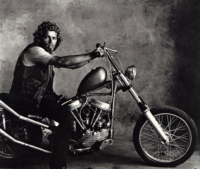
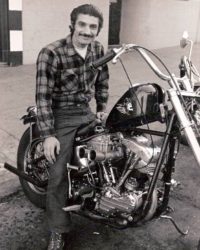
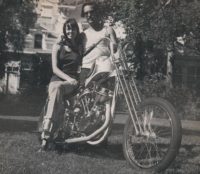
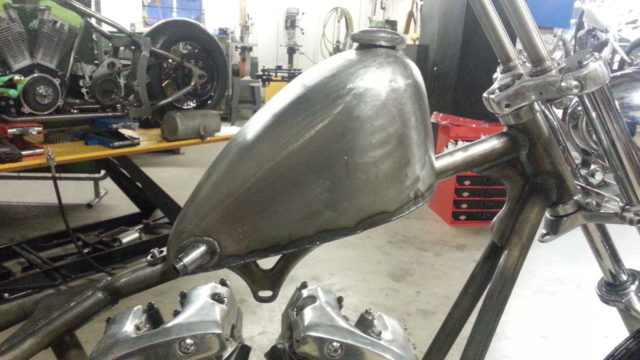
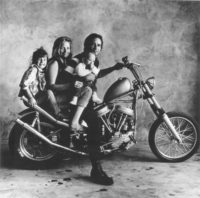
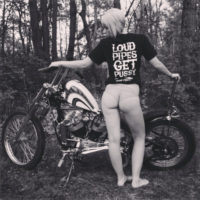

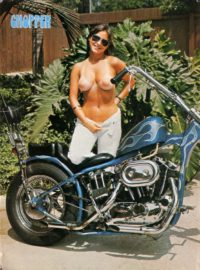

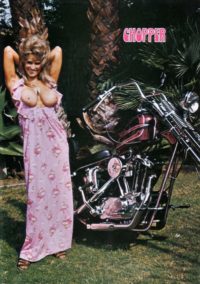
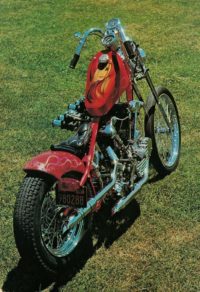
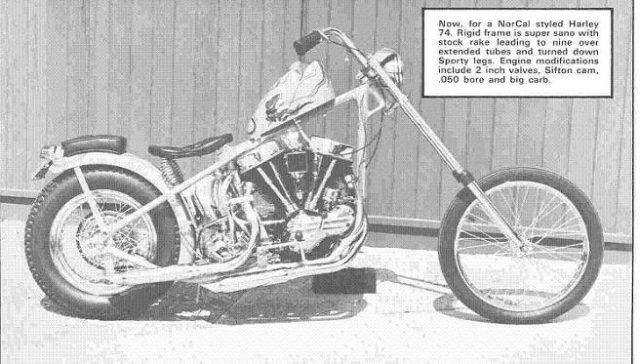

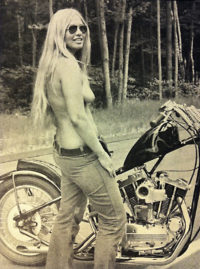
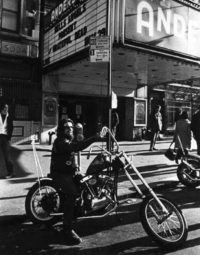

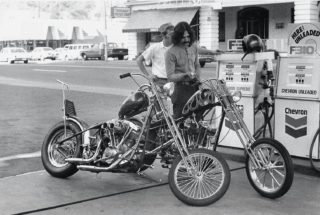
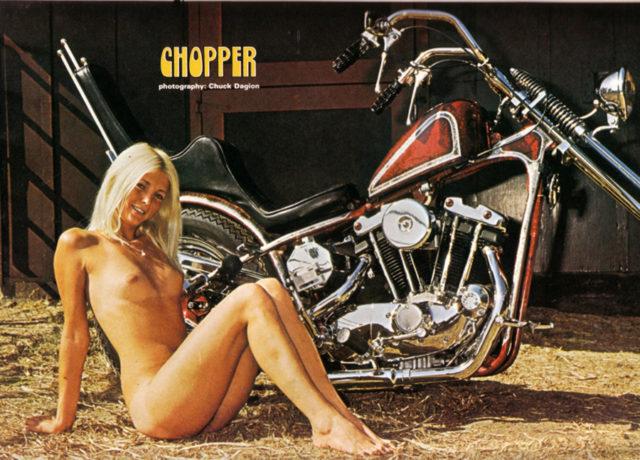


This was a good try at Frisco style but the pictures missed the mark. Most of the pic showed long choppers with raked front ends. The Frisco Harley was a sportster but a “74” could be used. Take was stock, front end maybe up to 6” over, twin disc brakes, medium height glide riser with drag bars or z bars, low, the frame was smooth with stock shocks in the rear, early a hardtail. Rear fender bobbed with side mount plate and light. No sissy bar, maybe a small tie on bar. 16” in back 21” in front. Sportster tank customized or stock, always mounted high on the top rail hence “Frisco” style. The pegs were alway midmount with the controls and usually mount much higher up the side of the motorcycle then stock. This gave the rider the image of a jockey riding a race horse. Very aggressive and crazy because the riders knees were up along side the tank and he was bent forward reaching forward for the drag bars! I know this stuff cause I built several of the style harley , Sportster and “74”. I did not live on the WC but Easy Rider mag, Chopper illustrated, Custom Chopper covered all the styles and we copied them exactly. In 1967 the year of my first harley chopper I was the only one in my small town so magazines were a great help! Good job on the video!!!
Thanks for that Frank, you’re right.